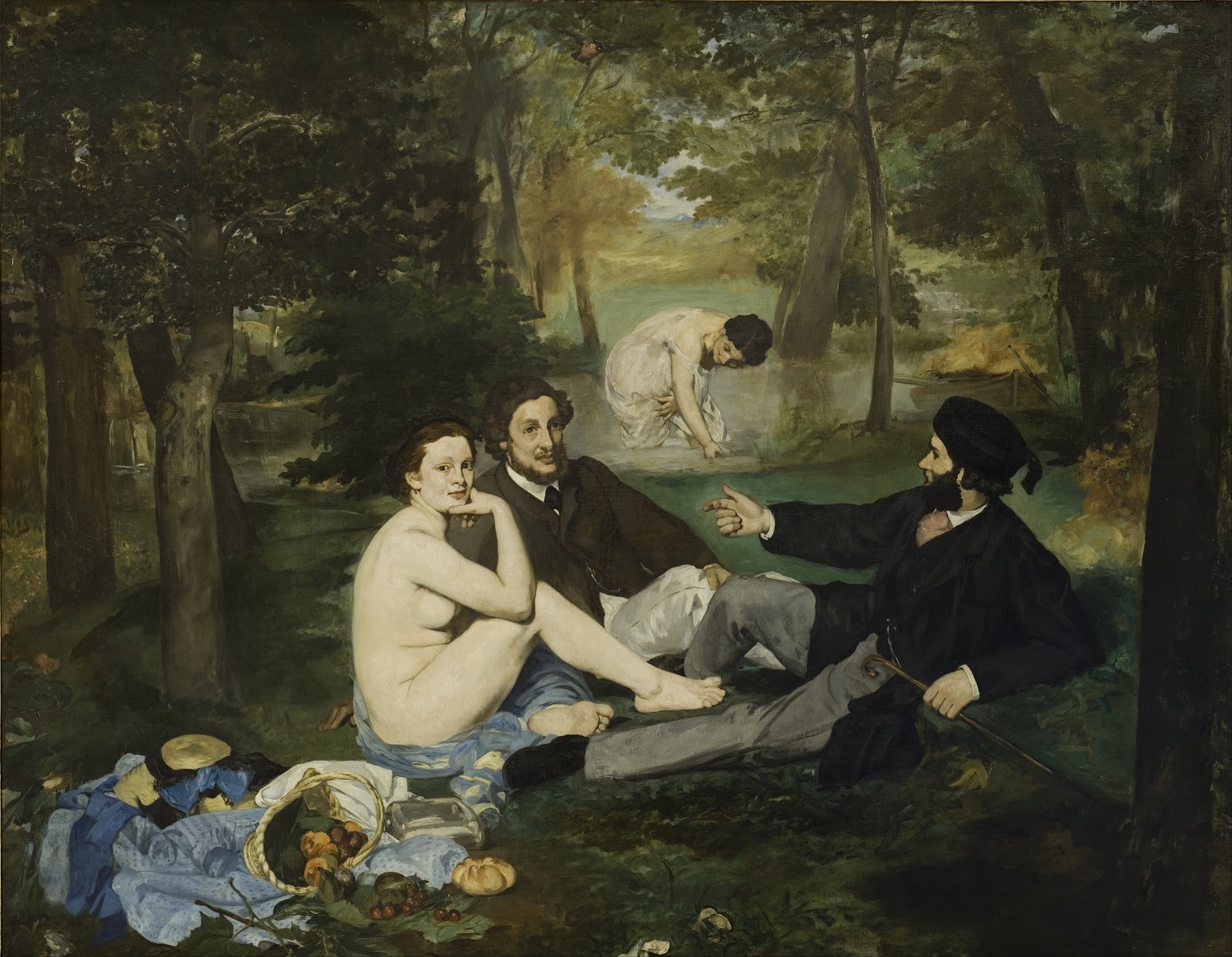
The Potential of the Female Gaze
Art “is a delimitation of spaces and times, of the visible and the invisible, of speech and noise, that simultaneously determines the place and the stakes of politics as a form of experience. Politics revolves around what is seen and what can be said about it, around who has the ability to see and the talent to speak, around the properties of spaces and the possibilities of time,” Rancière writes (Politics of Aesthetics 8). To examine the implications of this idea, I will place it into context with Édouard Manet’s 1863 painting Luncheon on the Grass. It has been a while (over a decade) since I studied this painting in art history class, so its political implications and connotations are a haze in my mind. Due to the lack of formal knowledge I have retained on this work, I believe this will be even more effective as a context for Ranciere’s ideas on art, aesthetics and politics.
Manet’s Luncheon on the GrassI do recall that this painting was met with political outrage or approbation due to the political stance and/or sensibilities of the individuals who were critiquing it in the late nineteenth century. The woman is naked, the gentlemen are fully clothed, and she is controversially, directly staring at the spectator of the painting, as if challenging them to admit they are voyeurs to this private luncheon in a natural setting. In this example then, whether or not Manet intended this art work as a political statement matters not (for the purposes of examining the above-quoted idea). Rather, the function of Manet’s Luncheon on the Grass is to delimit–to determine the limits or boundaries of–“spaces and times,” “visible and the invisible,” “speech and noise.” In other words, Luncheon on the Grass “determines the place and the stakes of politics”–rather than serving as a statement on politics in and of itself. For Rancière, “what is seen and what can be said about” Luncheon on the Grass is the object around which political conversation “revolves.” Politics involves “who has the ability to see and the talent to speak” about art objects like Manet’s, not the work itself but the dynamics–the who what where when why and how–that occur around or as a result of it.
The application of Rancière’s above distinction between art and the political aesthetics which surround it to Luncheon on the Grass would imply that the painting sets up the space/time context for the political conversation to occur, not that it is a political act in itself. Rancière’s statements–“The arts only ever lend to projects of domination or emancipation what they are able to lend to them” (14) and “Whatever might be the specific type of economic circuits they lie within, artistic practices are not ‘exceptions’ to other practices. They represent and reconfigure the distribution of these activities” (42)–further elaborate on the idea that Manet’s painting can only lend what it “is able to,” to the perceived male/societal domination of women such as the one looking straight at us, naked and objectified at a luncheon with fully clothed men. Manet’s painting “represents and reconfigures” the distribution of the “economic circuits” it lies within, and is not an “exception” to economic practices. In other words, it is within and not outside of the cultural situation in which it participates and allows the space and time for people to dialogue on. By providing an exhibition of a naked woman, Manet shows the exploitation, or freedom, of the woman. This is, perhaps, circular. But, nonetheless, the direct gaze of the woman provides the voyeur with a jolt of some self-awareness which could spur sociopolitical change, or not.

